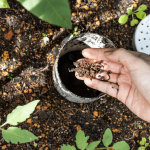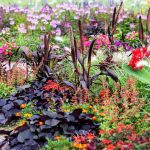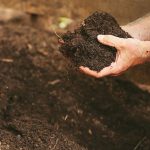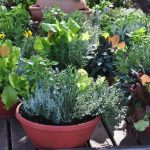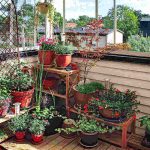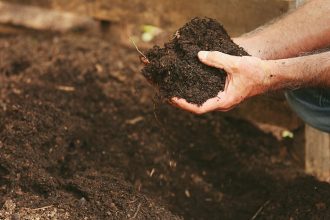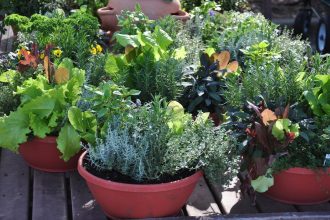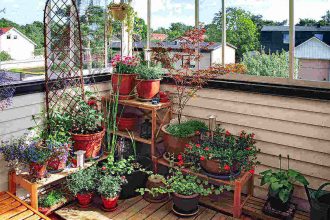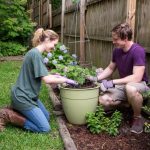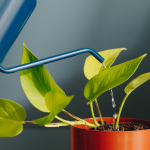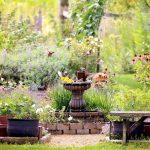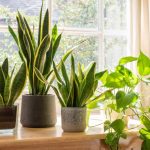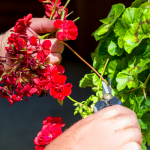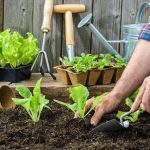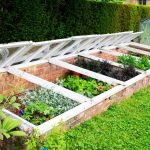With city living on the rise and green spaces becoming harder to come by, many city-dwellers are turning to container gardening as a way to bring a touch of nature into their urban homes. Container gardening is not just a practical solution for those with limited outdoor space, but also a creative and rewarding way to cultivate a garden of your own. Whether you’re a seasoned gardener looking for a new challenge or a complete novice eager to try your hand at gardening, getting started with container gardening is a fantastic way to connect with nature and beautify your living space. In this article, we’ll explore the basics of container gardening and provide you with all the information you need to start your own mini garden oasis.

Selecting the Right Containers
When it comes to container gardening, is key to ensuring your plants thrive. The first step is to consider the size of the plants you want to grow. Some plants, like tomatoes or peppers, require larger containers with ample room for their roots to spread. On the other hand, herbs and small flowers can do well in smaller pots.
Next, think about the material of the containers. Clay pots are porous and allow for good air circulation, but they can dry out quickly. Plastic containers, on the other hand, retain moisture better but may not be as breathable. Consider the pros and cons of each material based on the needs of your plants.
Drainage is another important factor to consider. Make sure your containers have drainage holes to prevent waterlogged soil, which can lead to root rot. If your containers do not have drainage holes, you can add a layer of gravel or broken pottery at the bottom to improve drainage.
Finally, consider the aesthetic of your containers. Choose pots that complement your outdoor space and personal style. Whether you opt for colorful ceramic pots or classic terracotta, selecting containers that you love will make your container garden a beautiful addition to your home.
Choosing the Ideal Plants for Containers
When it comes to container gardening, choosing the ideal plants for your pots can make all the difference. Whether you’re a seasoned gardener or just starting out, there are a few key things to keep in mind when selecting plants for containers.
Sunlight: Before choosing your plants, consider the amount of sunlight your containers will receive. Some plants thrive in full sun, while others prefer partial or full shade. Make sure to select plants that are suited for the specific conditions of your container garden.
Size and shape: When selecting plants for containers, be mindful of their size and shape. Taller plants can add height and drama to your arrangement, while trailing plants can create a cascading effect. Mix and match different sizes and shapes to create a visually appealing container garden.
Watering needs: Different plants have different watering requirements, so be sure to choose plants that have similar needs. Group plants with similar watering needs together to make it easier to care for your container garden.
Optimizing Soil and Drainage for Container Gardening
When it comes to container gardening, one of the most important factors to consider is the soil and drainage system you use. Properly optimizing the soil and drainage can make a significant difference in the health and growth of your plants. Here are some tips to help you get started:
- Choose the right type of soil: Use a high-quality, well-draining potting mix to ensure that water doesn’t sit at the bottom of your container and cause root rot. Look for mixes specifically designed for container gardening.
- Consider adding amendments: Depending on the type of plants you are growing, you may need to add amendments such as perlite or vermiculite to improve drainage and aeration.
- Monitor moisture levels: Make sure to water your container plants regularly, but be cautious of overwatering. Check the moisture level of the soil frequently and adjust your watering schedule accordingly.
| Soil Type | Recommended Amendments |
|---|---|
| Sandy soil | Coconut coir |
| Clay soil | Perlite |
| Loamy soil | Vermiculite |
Maintenance Tips for Healthy Container Gardens
When it comes to maintaining healthy container gardens, there are a few key tips to keep in mind to ensure your plants thrive in their confined space.
- Regular Watering: Container gardens tend to dry out faster than traditional garden beds, so be sure to water your plants regularly, especially during hot summer months.
- Fertilize Regularly: Since container plants are confined to a limited amount of soil, they can quickly deplete nutrients. Fertilize your plants every few weeks to ensure they have the necessary nutrients to grow strong and healthy.
- Monitor Sunlight: Make sure to place your container garden in an area that receives adequate sunlight for the specific plants you are growing. Most plants require at least 6-8 hours of sunlight per day.
| Plant | Sunlight | Watering |
|---|---|---|
| Tomatoes | Full sun | Regularly, daily in hot weather |
| Herbs | Partial sun | When soil feels dry to the touch |
By following these maintenance tips, you’ll be well on your way to enjoying a bountiful container garden that adds beauty and freshness to your outdoor space.
As you embark on your container gardening journey, remember to embrace the creativity and flexibility that comes with this form of gardening. By selecting the right containers, choosing the perfect plants, and providing them with proper care, you can bring a touch of nature into even the smallest of spaces. So go ahead, dig in, and watch as your tiny garden flourishes and blooms right before your eyes. Happy gardening!


